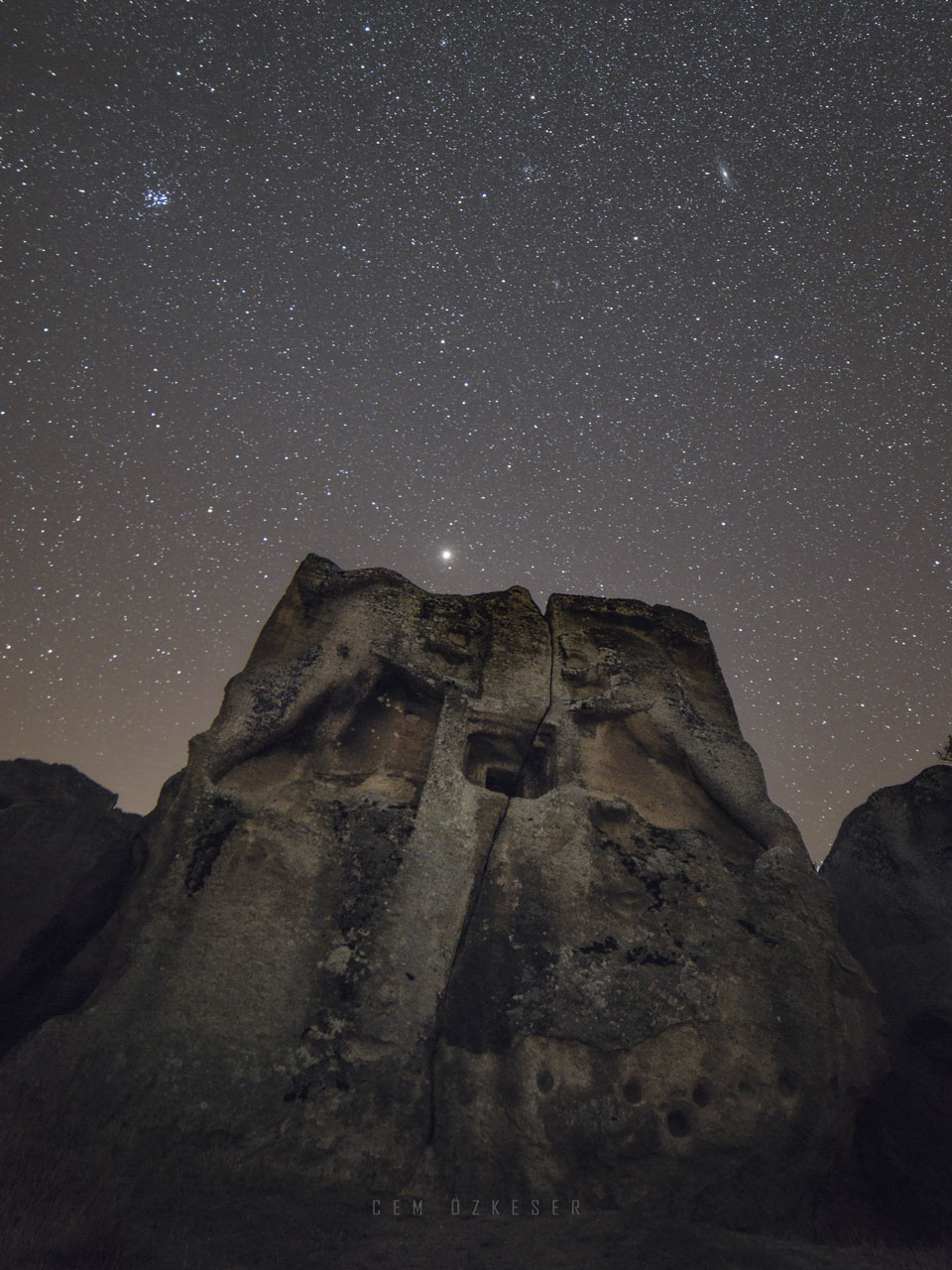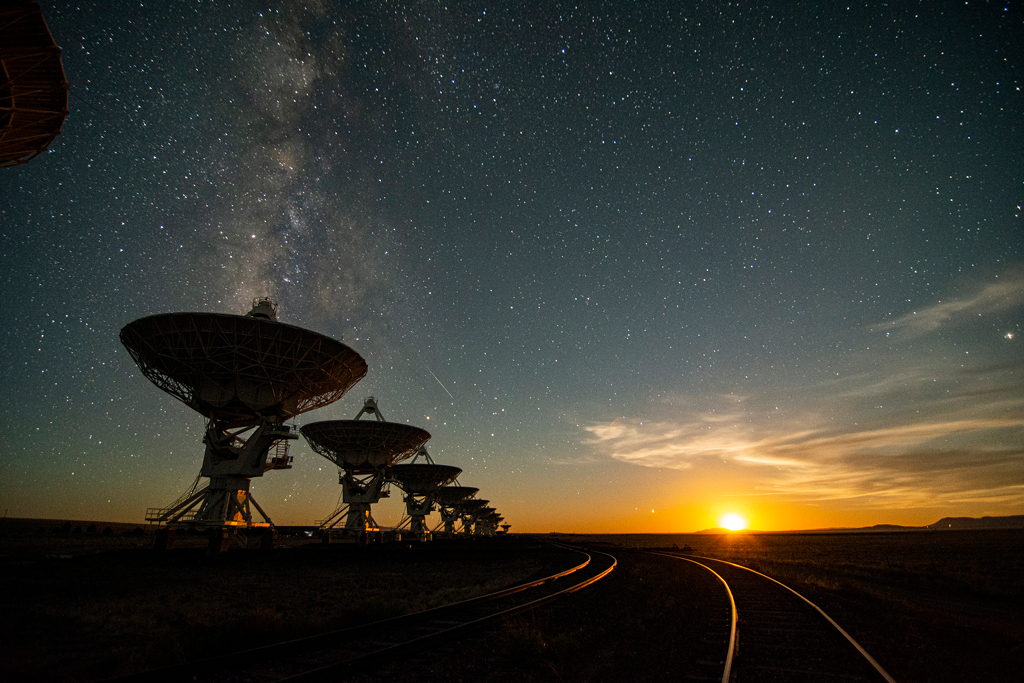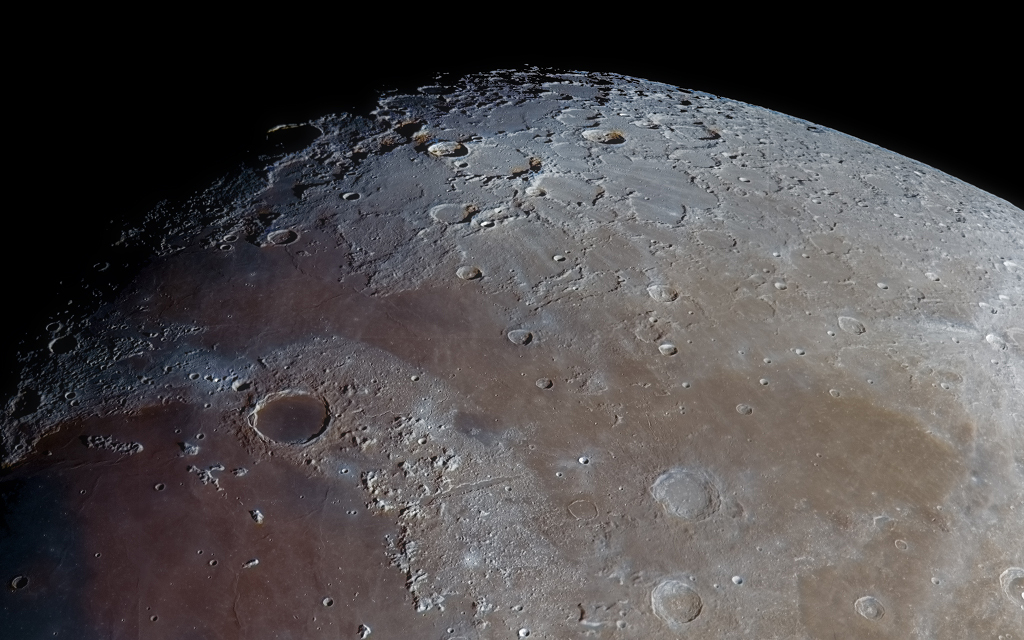Quando uma estrela infeliz se aproxima demasiado de um buraco negro supermassivo situado no centro de uma galáxia, a extrema atração gravitacional exercida pelo buraco negro desfaz a estrela em finas correntes de matéria,” explica Thomas Wevers, autor do estudo e bolseiro do ESO em Santiago do Chile, em comunicado de imprensa.
Nombre total de pages vues
13/10/2020
Ciência e Tecnologia - Morte por 'esparguetificação'. Como um buraco negro engoliu uma estrela - Video
Science & Technology - Astronomy picture of the day : Mars, Pleiades, and Andromeda over Stone Lions
2020 October 13
Image Credit & Copyright: Cem Özkeser
Explanation: Three very different -- and very famous -- objects were all captured in a single frame last month. On the upper left is the bright blue Pleiades, perhaps the most famous cluster of stars on the night sky. The Pleiades (M45) is about 450 light years away and easily found a few degrees from Orion. On the upper right is the expansive Andromeda Galaxy, perhaps the most famous galaxy -- external to our own -- on the night sky. Andromeda (M31) is one of few objects visible to the unaided eye where you can see light that is millions of years old. In the middle is bright red Mars, perhaps the most famous planet on the night sky. Today Mars is at opposition, meaning that it is opposite the Sun, with the result that it is visible all night long. In the foreground is an ancient tomb in the Phygrian Valley in Turkey. The tomb, featuring two stone lions, is an impressive remnant of a powerful civilization that lived thousands of years ago. Mars, currently near its brightest, can be easily found toward the east just after sunset.
12/10/2020
Science & Technology - Astronomy picture of the day : Descending Toward Asteroid Bennu
2020 October 12
Video Credit: NASA, OSIRIS-REx, NASA's Scientific Visualization Studio; Data: NASA, U. Arizona, CSA, York U., MDA
Explanation: What would it be like to land on an asteroid? Although no human has yet done it, NASA's robotic OSIRIS-REx spacecraft is scheduled to attempt to touch the surface of asteroid 101955 Bennu next week. The goal is to collect a sample from the nearby minor planet for return to Earth for a detailed analysis in 2023. The featured video shows what it looks like to descend toward the 500-meter diamond-shaped asteroid, based on a digital map of Bennu's rocky surface constructed from image and surface data taken by OSIRIS-REx over the past 1.5 years. The video begins by showing a rapidly spinning Bennu -- much faster than its real rotation period of 4.3 hours. After the rotation stops, the virtual camera drops you down to just above the rugged surface and circles a house-sized rock outcrop named Simurgh, with the flatter outcrop Roc visible behind it. If the return sample reaches Earth successfully, it will be scrutinized for organic compounds that might have seeded a young Earth, rare or unusual elements and minerals, and clues about the early history of our Solar System.
10/10/2020
Science & Technologie - Astronomy picture of the day : The Very Large Array at Moonset
2020 10 octobre
Image Credit: Jeff Hellermann, NRAO / AUI / NSF
Explication : Un spectacle inspirant, ces antennes géantes du Karl G. Jansky Very Large Array (VLA) s’élèvent au-dessus du désert du Nouveau-Mexique à moonset. Montées sur des piliers mais transportables sur les voies ferrées pour modifier la configuration du VLA, ses 27 antennes de fonctionnement sont chacune de la taille d’une maison (25 mètres de diamètre) et peuvent être organisées en un réseau couvrant la taille d’une ville (35 kilomètres). Un cheval de bataille prolifique de radioastronomie, le VLA a été utilisé pour découvrir l’eau sur la planète Mercure,coronae radio-brillante autour des étoiles, micro-quasars dans notre galaxie, gravitationnellement induit anneaux Einstein autour des galaxies lointaines, et les homologues radio à cosmologiquement lointains sursauts gamma. Sa grande taille a permis aux astronomes d’étudier les détails des galaxies radio, des jets cosmiques ultra-rapides, et de cartographier le centre de notre propre Voie lactée. Aujourd’hui, 40 ans après son dévouement, le VLA a été utilisé dans plus de 14 000 projets d’observation et a contribué à plus de 500 thèses de doctorat. Le 10 octobre, l’Observatoire national de radioastronomie organisera une journée de célébration en ligne de l’ALV à 40 ans avec des visites virtuelles et des présentations sur l’histoire, les opérations, la science et l’avenir du Very Large Array.
08/10/2020
Science & Technologie - Astronomy picture of the day
Image Credit & Copyright: Matt Smith
Explanation: Lighter than typically dark, smooth, mare the Mare Frigoris lies in the far lunar north. Also known as the Sea of Cold, it stretches across the familiar lunar nearside in this close up of the waxing gibbous Moon's north polar region. Dark-floored, 95 kilometer wide crater Plato is just left of the center. Sunlit peaks of the lunar Alps (Montes Alpes) are highlighted below and right of Plato, between the more southern Mare Imbrium (Sea of Rains) and Mare Frigoris. The prominent straight feature cutting through the mountains is the lunar Alpine Valley (Vallis Alpes). Joining the Mare Imbrium and Mare Frigoris, the lunar valley is about 160 kilometers long and up to 10 kilometers wide.
14/09/2020
Corn Moon Rising - (Science & Technology - Astronomy picture of the day)
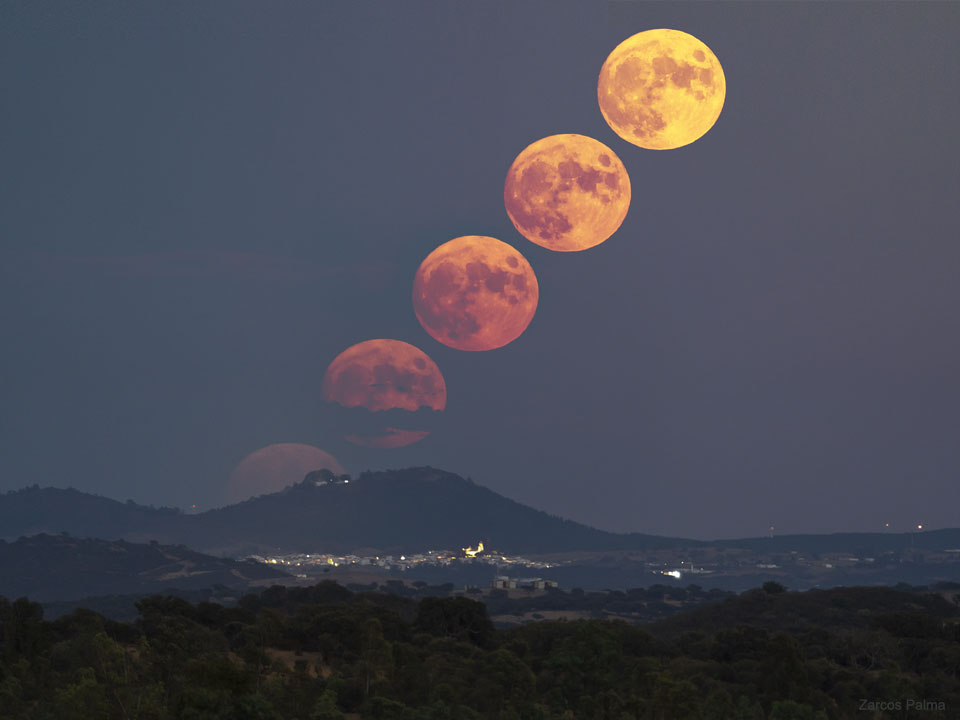
Image Credit & Copyright: Zarcos Palma
09/09/2020
Une nouvelle imagerie du cerveau (Science & Technologie - Santé/Médecine)
08/09/2020
GW190521: Unexpected Black Holes Collide - (Science & Technology - Astronomy picture of the day)
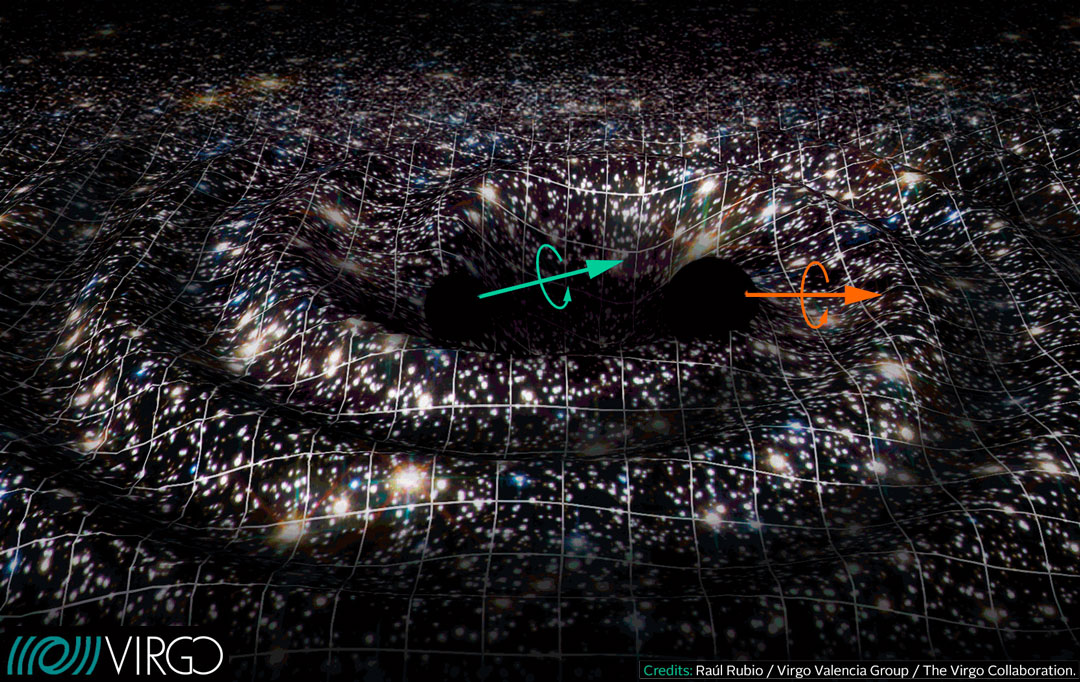
Illustration Credit: Raúl Rubio (Virgo Valencia Group, The Virgo Collaboration)
07/09/2020
Simon R. Hudson : The Milky Way over St Michael's Mount - (Science & Technology - Astronomy picture of the day)
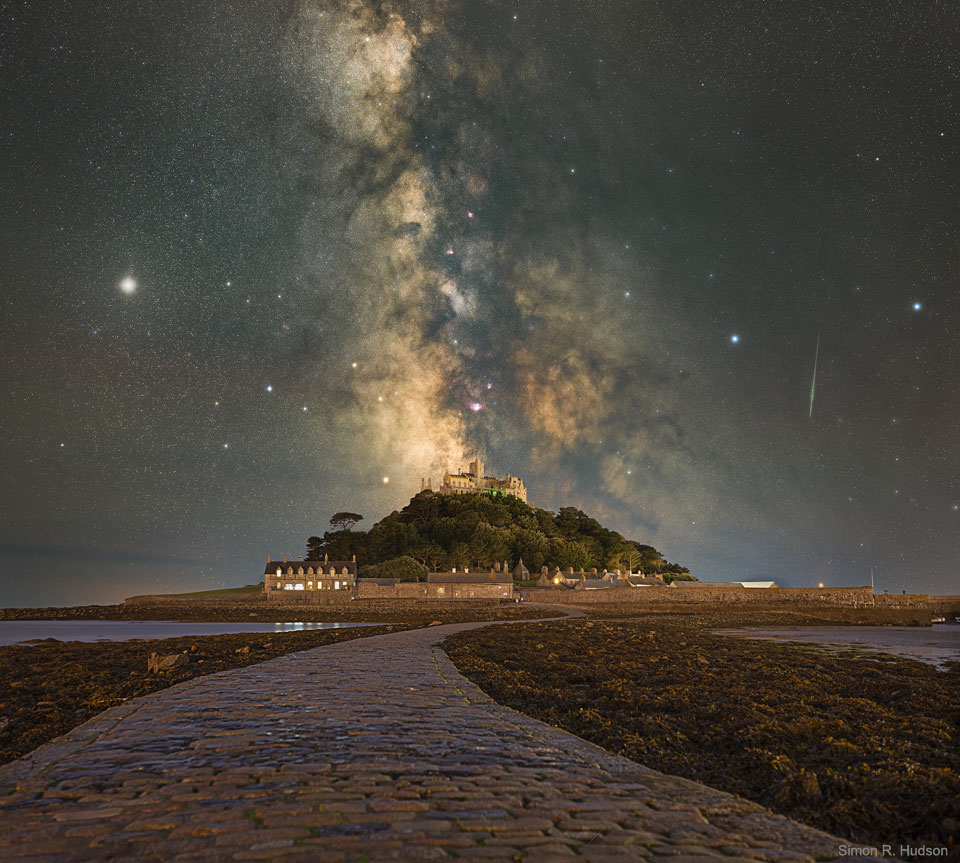
Image Credit: Simon R. Hudson
ASTRONOMY - Orion and the Ocean of Storms
2025 December 13 Orion and the Ocean of Storms Image Credit: NASA , Artemis 1 Explanation: On December 5, 2022, a camera on board the u...

-
2022 September 26 All the Water on Planet Earth Illustration Credit: Jack Cook, Adam Nieman, Woods Hole Oceanographic Institution ; Data ...
-
2025 May 11 The Surface of Venus from Venera 14 Image Credit: Soviet Planetary Exploration Program , Venera 14 ; Processing & Copyri...
